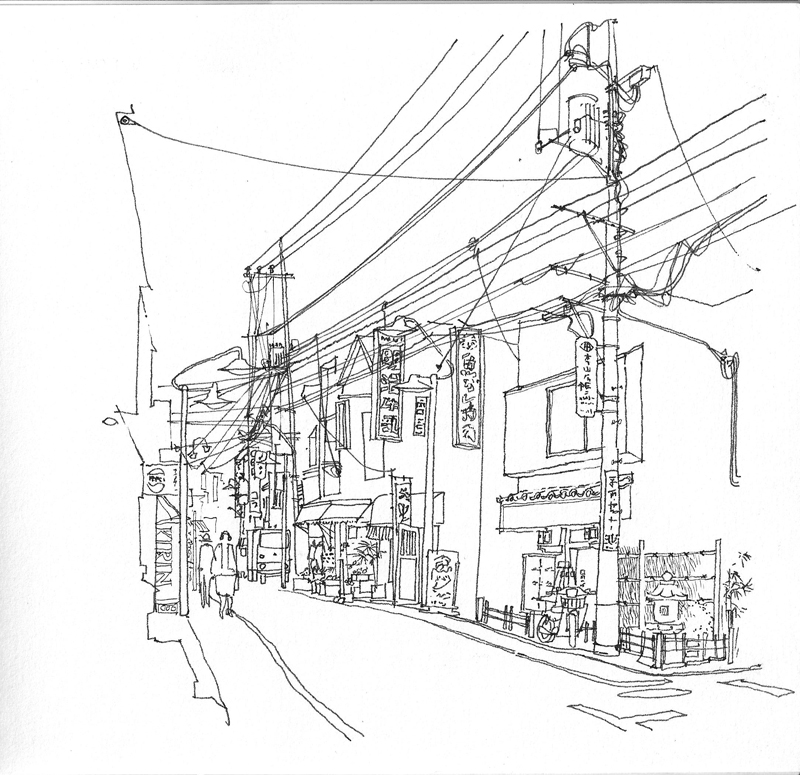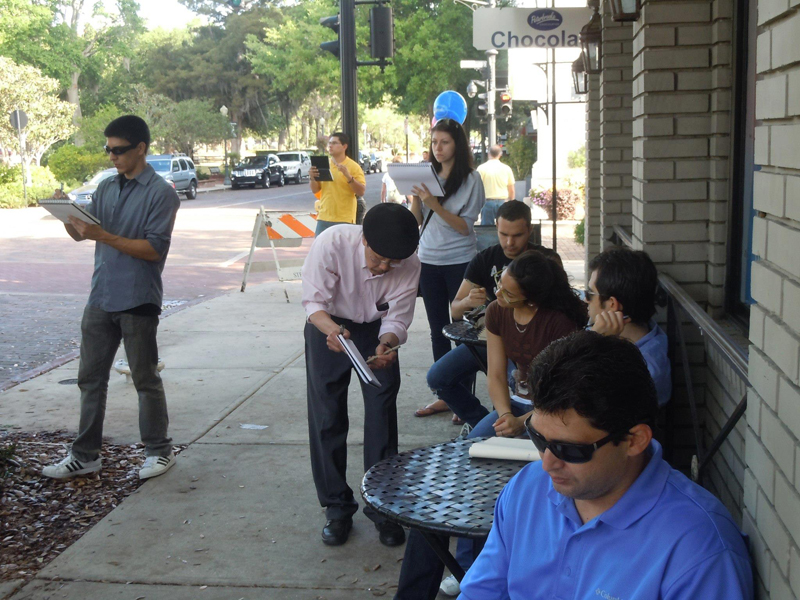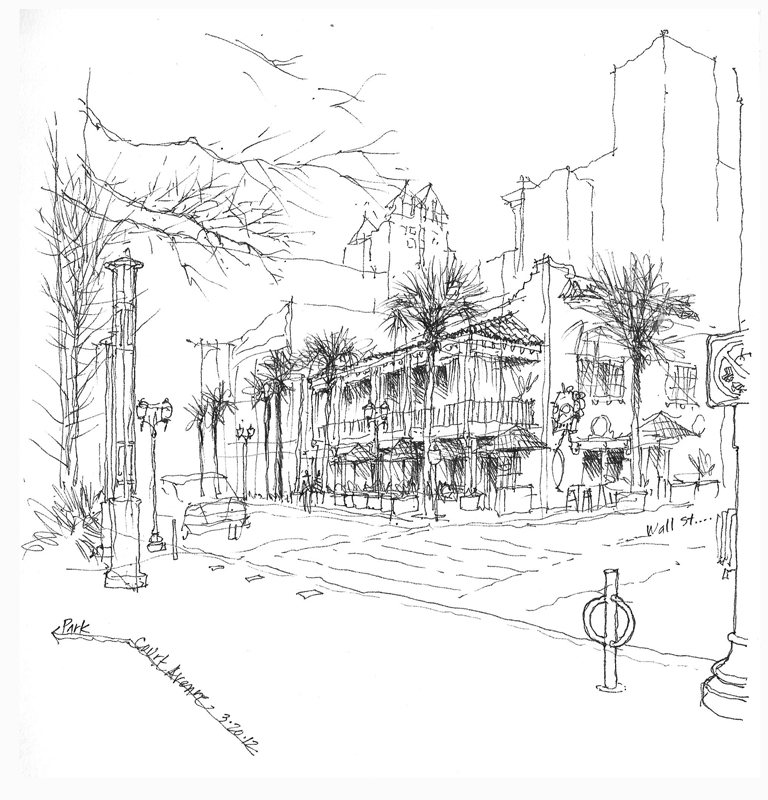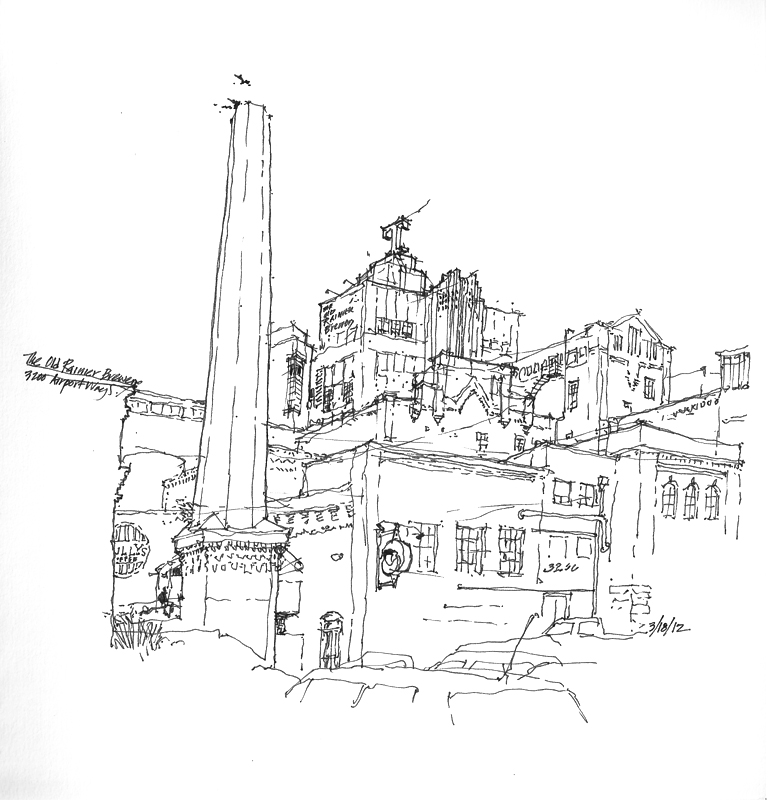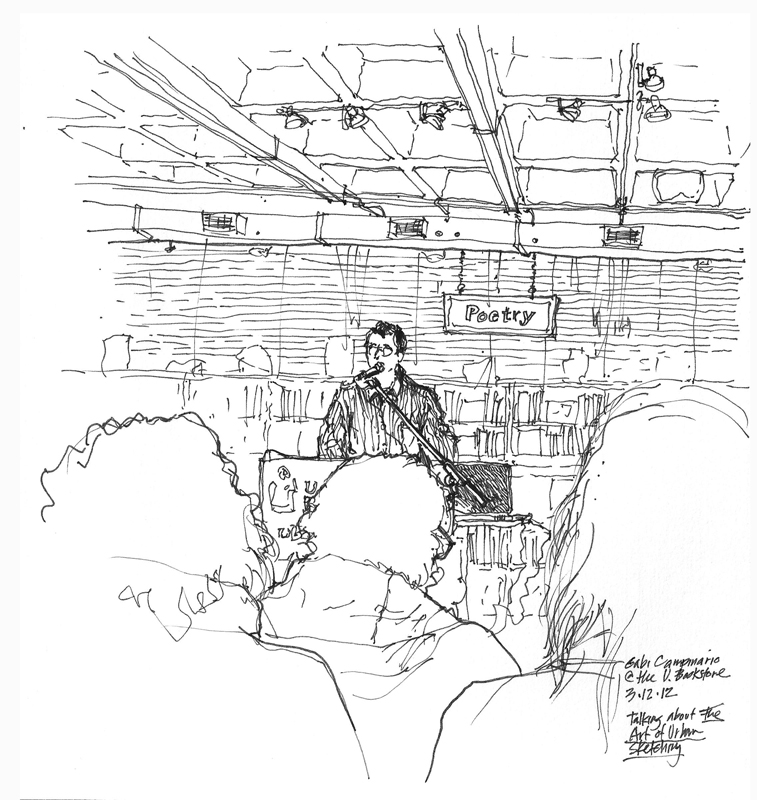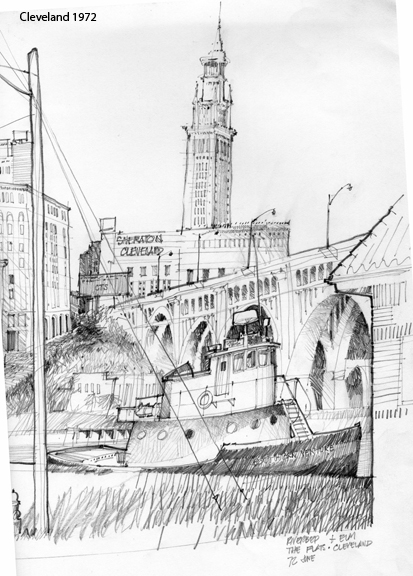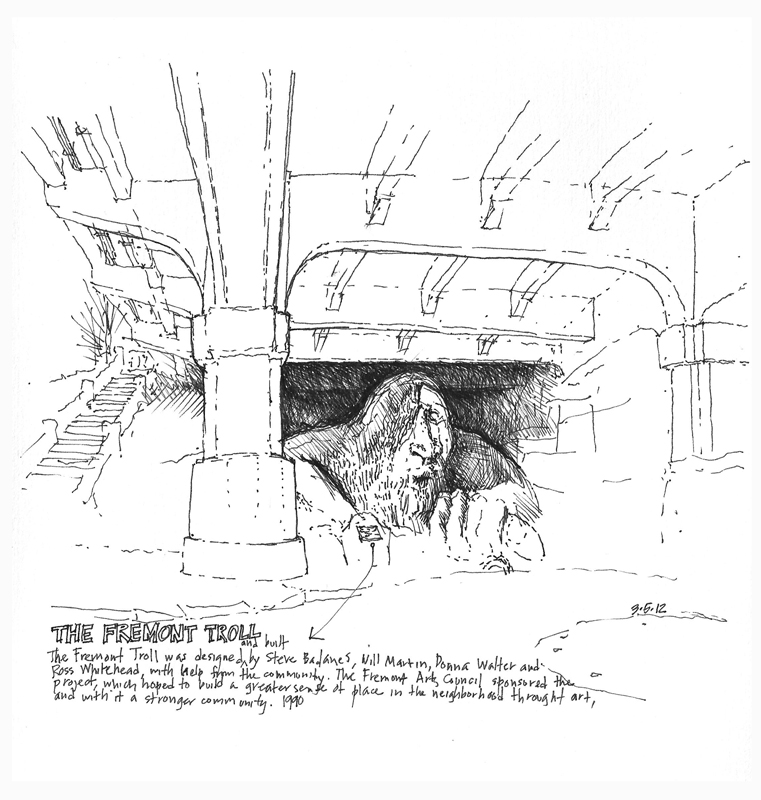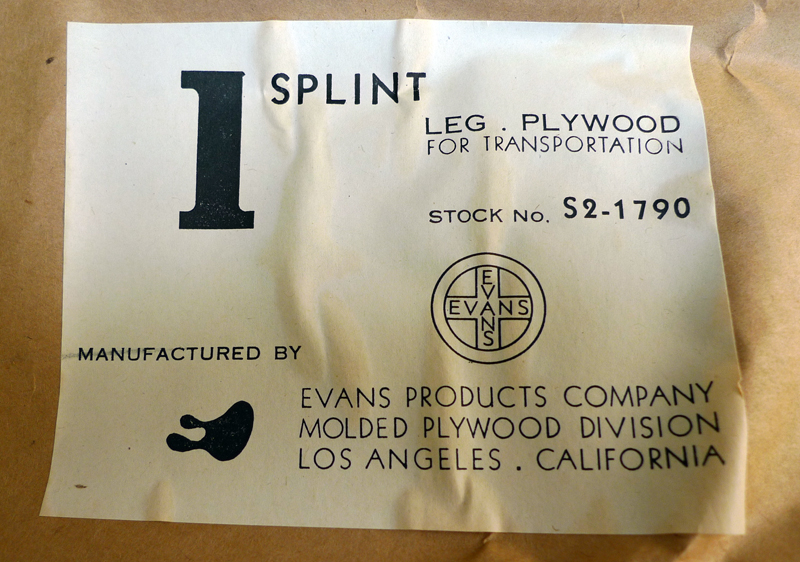While I encourage design students to develop the habit of maintaining a visual journal while they are in school, the first real journal I kept was while I was a visiting faculty at the Tokyo Institute of Technology in 1992. During the month-long stay, I set myself the goal of doing a sketch a day. The result of this effort was the publication of Sketches from Japan in 2000 by John Wiley & Sons.
Since the book is now out-of-print, I am posting the first page in the sketchbook, for which I wrote the following caption:
“This is one of the main streets of O-okayama, a few blocks from the International House where visiting faculty stay while at the Tokyo Institute of Technology. Drawing this established the process for the remaining drawings in this sketchbook, starting with a significant contour or shape, sized and positioned relative to the dimensions of the page, and then filling in this frame with the contours of the smaller shapes and details. This deliberate, methodical way of working enabled me to pay attention to the pattern of the whole as well as the multitude of details I saw and experienced.”

